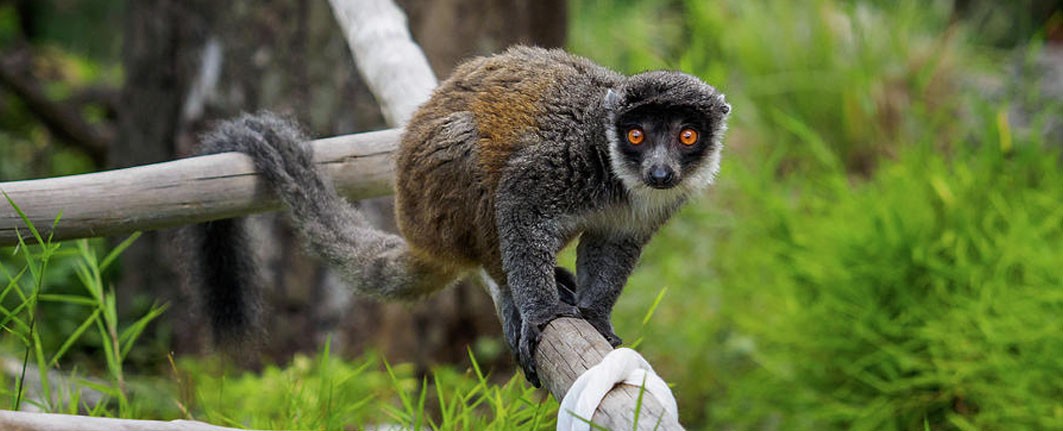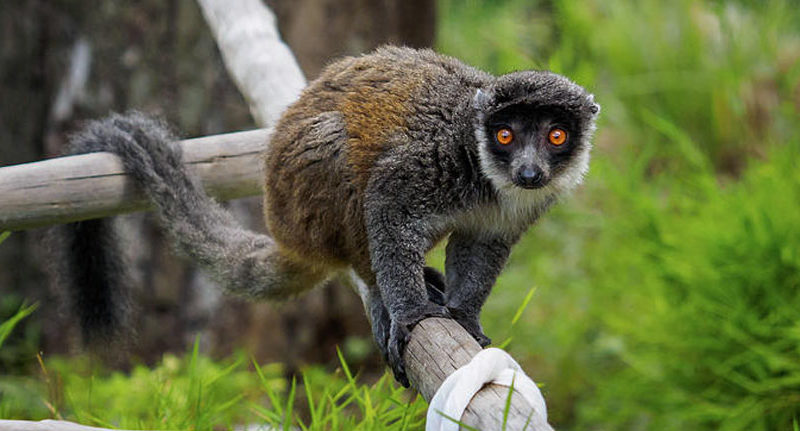
Madagascar Mongoose Lemur: A Rare and Fascinating Primate
The Madagascar Mongoose Lemur (Eulemur mongoz) is one of the most unique and endangered primates found on the island of Madagascar. Known for its distinctive facial markings, semi-nocturnal habits, and rare social structure, the mongoose lemur is a species that attracts wildlife lovers, conservationists, and eco-travelers alike.
In this article, we’ll explore everything you need to know about the Madagascar Mongoose Lemur—its habitat, diet, behavior, threats, and conservation efforts.
What is the Mongoose Lemur?
The Madagascar Mongoose Lemur is a medium-sized primate that belongs to the family Lemuridae. Unlike other lemurs, this species exhibits unusual sexual dichromatism—males and females have different coat colors.
-
Male Mongoose Lemurs: typically darker with a reddish beard.
-
Female Mongoose Lemurs: lighter, with more grayish-brown fur.
This difference makes the Madagascar Mongoose Lemur instantly recognizable among other lemurs.
Habitat
The Madagascar Mongoose Lemur inhabits dry deciduous forests and semi-arid areas in northwestern Madagascar. It prefers habitats with dense vegetation and fruiting trees, which are essential to its survival.
Interestingly, some populations of the Madagascar Mongoose Lemur have also been found on the Comoros Islands, likely introduced by humans centuries ago.
Behavior and Lifestyle
The Mongoose Lemur has fascinating behavioral traits:
-
Semi-nocturnal: active during both day and night.
-
Social structure: lives in small family groups of 3–6 individuals.
-
Communication: relies on vocal calls, scent marking, and grooming.
This lifestyle makes the Madagascar Mongoose Lemur particularly adaptable, although its numbers are declining rapidly due to habitat loss.
Diet of the Mongoose Lemur
The Madagascar Mongoose Lemur is primarily frugivorous, meaning it feeds mainly on fruits. However, its diet also includes:
-
Flowers
-
Leaves
-
Nectar
-
Occasionally insects
This diverse diet allows the Madagascar Mongoose Lemur to thrive in both dry and wet seasons, making it a key species for forest regeneration.
Why is the Mongoose Lemur Endangered?
Sadly, the Mongoose Lemur is classified as Critically Endangered by the IUCN. Its population is shrinking due to:
-
Deforestation for agriculture and charcoal production.
-
Hunting and trapping for bushmeat.
-
Climate change impacting fruit availability.
Without urgent conservation measures, the Mongoose Lemur could face extinction within decades.
Conservation Efforts to Protect the Mongoose Lemur
Several organizations are working to save the Mongoose Lemur through:
-
Establishing protected areas in Madagascar.
-
Promoting eco-tourism to generate funds for conservation.
-
Running community awareness programs to reduce hunting.
-
Supporting captive breeding programs in zoos worldwide.
Travelers visiting Madagascar can contribute by choosing sustainable tours that support local conservation projects.
Why You Should Visit Madagascar to See the Mongoose Lemur
Spotting the Mongoose Lemur in its natural habitat is a once-in-a-lifetime experience. Eco-travelers can visit reserves such as:
-
Lokobe National Park
-
Ankarafantsika National Park
-
Special reserves in the northwest of Madagascar
Tourism not only provides unforgettable experiences but also helps fund the conservation of the Mongoose Lemur and other rare species.
Final Thoughts
The Mongoose Lemur is one of the rarest lemurs in the world, and its survival depends on global awareness, conservation action, and responsible tourism. Whether you’re a wildlife enthusiast, a researcher, or a traveler, learning about this unique primate is the first step toward ensuring its protection.
HT AGENCY TOURS
Luxury Madagascar with the best luxury African safari tours packages. Discover your next perfect destination with HT Agency Tours

